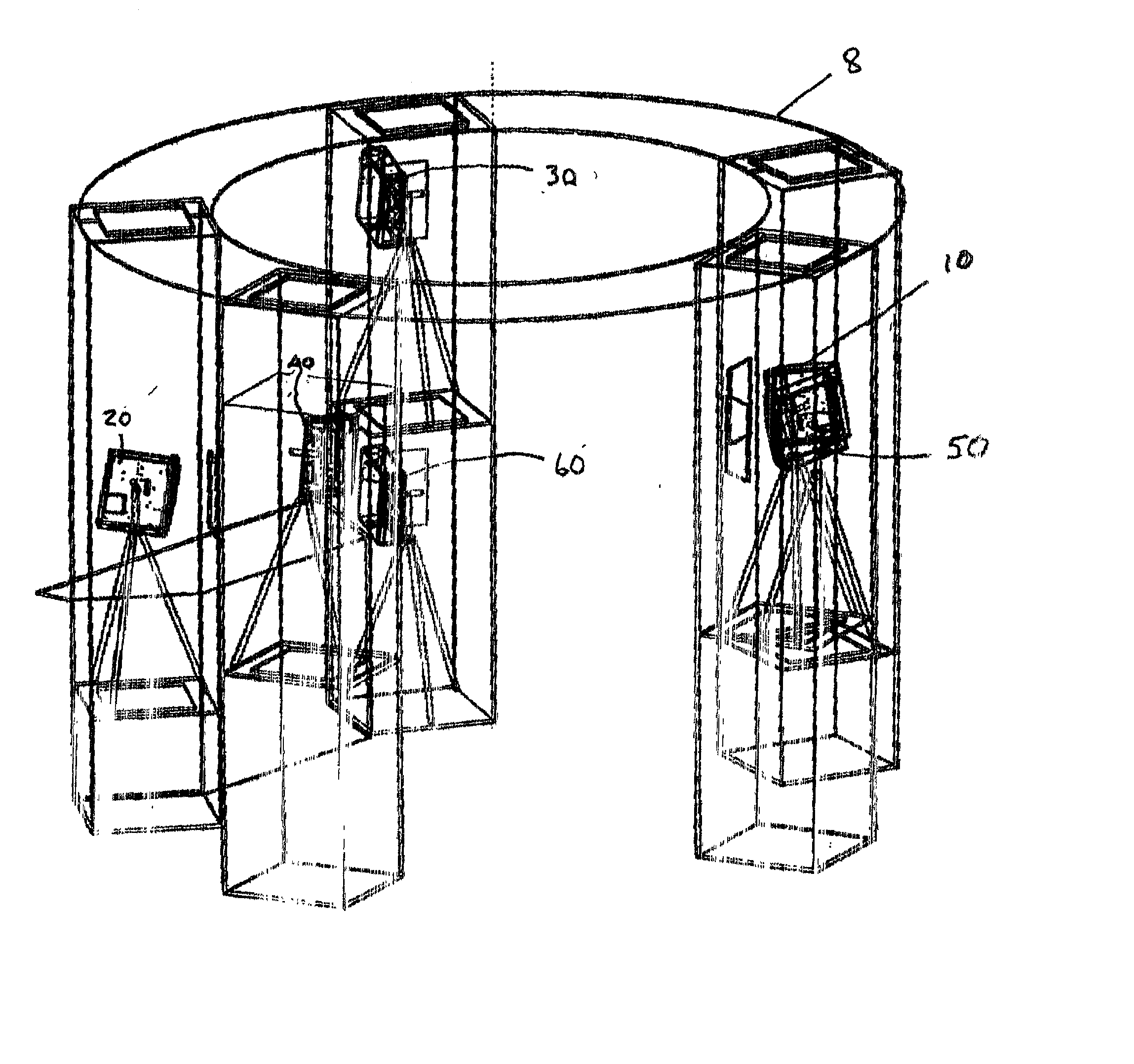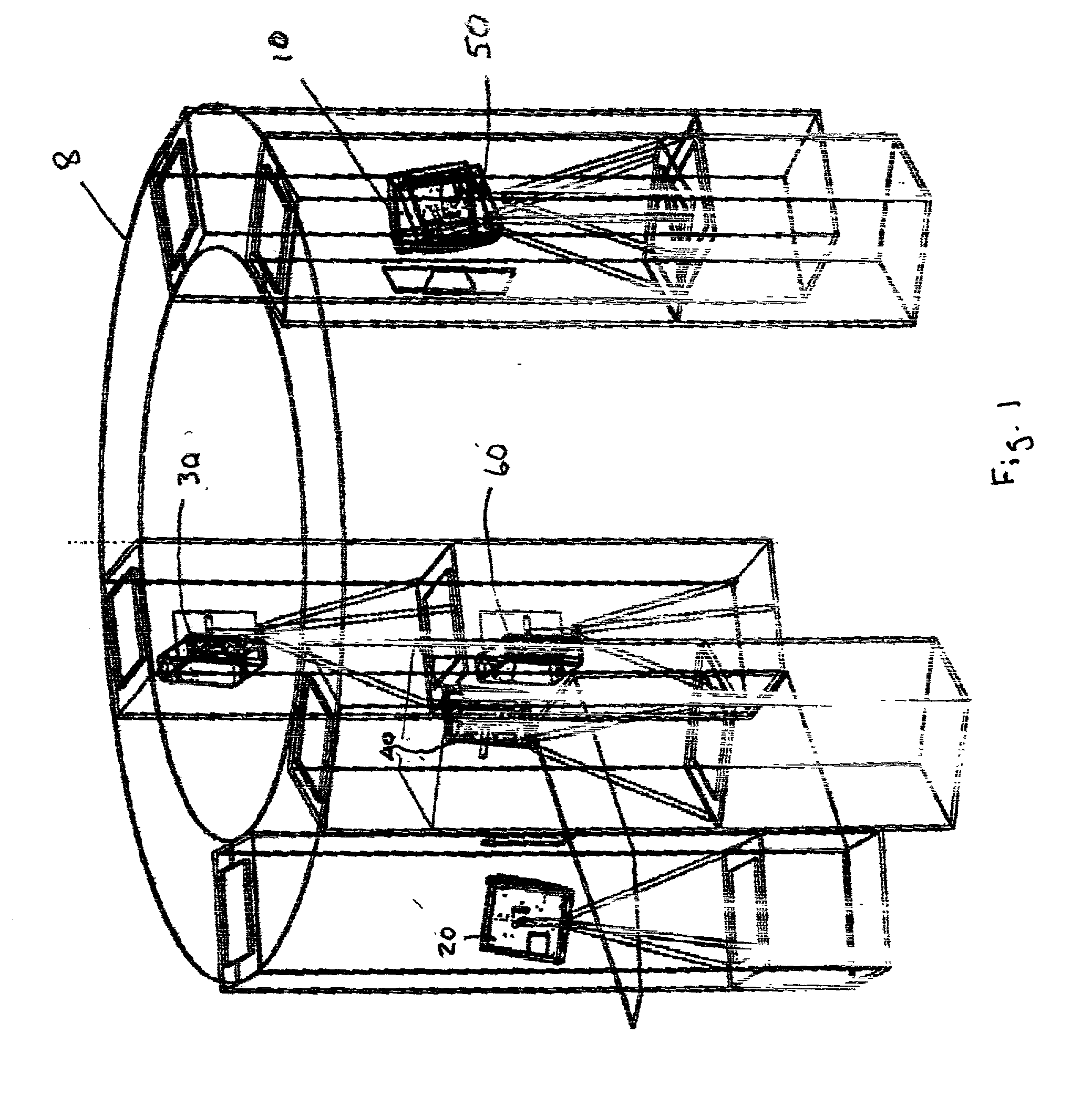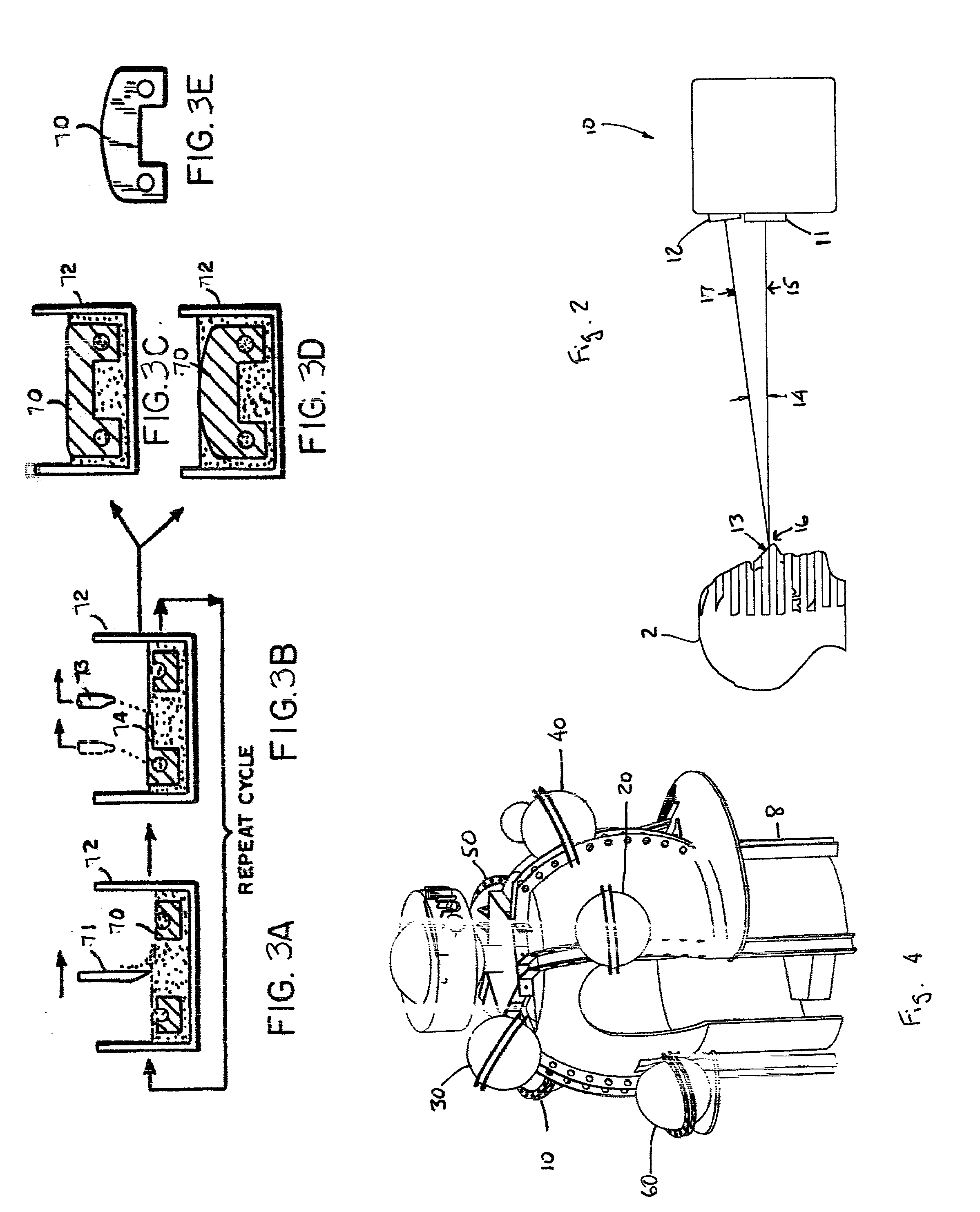Apparatus and method for three-dimensional scanning of a subject, fabrication of a natural color model therefrom, and the model produced thereby
a three-dimensional scanning and subject technology, applied in the field of three-dimensional scanning apparatus and three-dimensional scanning subject fabrication, can solve the problems of inconsequential limitation of the subject that can be viewed simultaneously by both television cameras, hardly be used for duplicating a living subject, and inconvenient fabrication of the model, etc., to achieve the effect of capturing the upper and lower aspects of the subject, cost and accuracy
- Summary
- Abstract
- Description
- Claims
- Application Information
AI Technical Summary
Benefits of technology
Problems solved by technology
Method used
Image
Examples
Embodiment Construction
[0037] The apparatus of the present invention is advantageously described with reference to the Figures described hereinabove. The present invention is conveniently described in the context of one application therefor, namely, as means for producing a model bust of a human subject. The general layout of such an apparatus is shown schematically in FIG. 1.
[0038] As indicated above, the apparatus comprises a plurality of scanners, each comprising an illumination portion and a camera portion. The illumination portion of the apparatus may be termed a projector. The camera portion of the apparatus is preferably a digital camera. In this embodiment of the invention, six scanners are employed. The scanners are identified, by location relative to a human subject, as: 10, covering the right front portion of the subject; 20, covering the left front portion of the subject; 30, covering the top front portion of the subject; 40, covering the left rear portion of the subject; 50, covering the righ...
PUM
 Login to View More
Login to View More Abstract
Description
Claims
Application Information
 Login to View More
Login to View More - R&D
- Intellectual Property
- Life Sciences
- Materials
- Tech Scout
- Unparalleled Data Quality
- Higher Quality Content
- 60% Fewer Hallucinations
Browse by: Latest US Patents, China's latest patents, Technical Efficacy Thesaurus, Application Domain, Technology Topic, Popular Technical Reports.
© 2025 PatSnap. All rights reserved.Legal|Privacy policy|Modern Slavery Act Transparency Statement|Sitemap|About US| Contact US: help@patsnap.com



